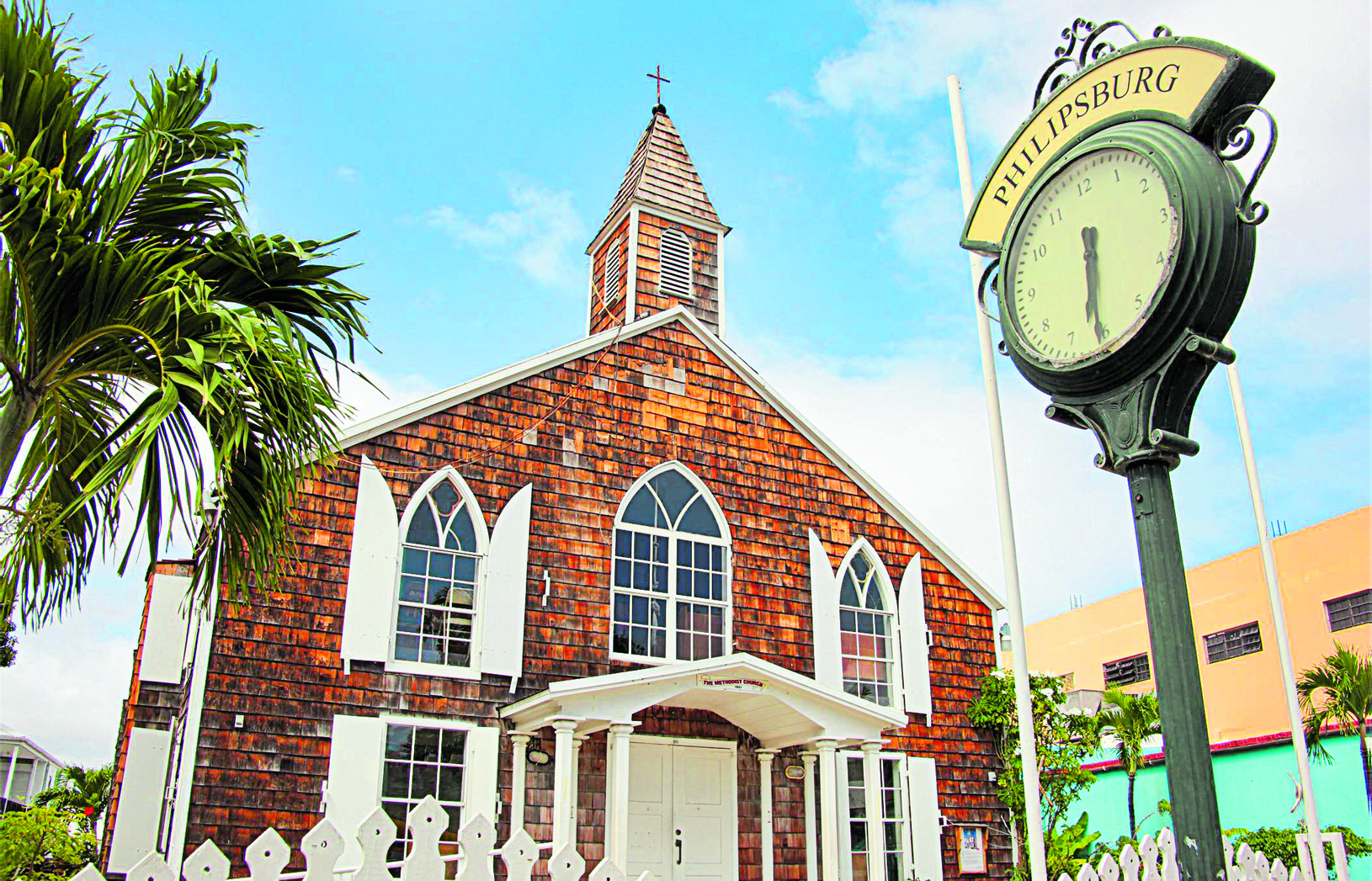St. Martin: turquoise sea, white beaches, and Creole cuisine

In this corner of the world between the Tropic of Cancer and the Equator, a two-and-a-half-hour flight from Panama, people seem to go about life with a certain ease, somewhat untethered from schedules, commitments, rushes, and stress.
A little background to help you understand the island of St. Martin. Measuring 90 km², it is divided between two nations: the Netherlands to the south; France to the north. Legend has it that the boundary was marked after a race. A Dutchman started running from one end and a Frenchman from the other; the latter was faster, and so France obtained more territory, 75 percent.
The truth is that the treaty signed in 1648 at Mont des Accords laid the foundations for healthy coexistence on the island, including the freedom to move freely—and it's inevitable to do so—from one side to the other. There are two currencies, two governments, two languages, and, yes, two ways of life.
The cultural differences are palpable: the Dutch side, with its expansive all-inclusive resorts, casinos, and fast food, is more tailored to the American tourist's taste; while the French side has a more bohemian spirit, with low, centuries-old buildings and narrow streets lined with bistros, wineries, cheese shops, and lolos (Creole cuisine restaurants). Gastronomy plays a major role on this side of the island, with 150 restaurants and chefs working to make it the culinary capital of the Caribbean.

The Methodist Church with a traditional street clock outside, Philipsburg, St. Maarten, Caribbean. Photo: Lisa Strachan
There's only one road on the island and only two drawbridges. If you're traveling by land, be patient, as traffic jams are common.
The French North In the north, there's an atmosphere of French glamour. Some call the area the Saint Tropez of the Caribbean. Boutique hotels—no giant all-inclusive resorts—international brand-name stores (irresistible), and gingerbread-style cottages, low-slung wooden island buildings with windows and front porches reminiscent of American Carpenter Gothic. But above all, the island is distinguished by its high-quality cuisine, attracting travelers who value fine dining when going on vacation.
From Marigot, the capital on the French side, you can reach neighboring Anguilla and St. Barth by ferry. A colorful craft market is held around the port from Friday to Sunday. Nearby, you can enjoy local cuisine overlooking the sea in the various restaurants (lolos) set up for tourists.
If gourmet experiences are your thing, Grand Case is a must-visit destination. This destination boasts dozens of places to explore island cuisine.
It's worth visiting during Mardi Gras, a popular street celebration in which women dance in bright costumes and feathers, from January to March.
The best beaches are on this side of the island, and there are exactly 37 of them, with absolutely turquoise waters . To the east is Orient Bay, a long stretch of sand surrounded by luxurious hotels and condominiums, ideal for beach sports. A brand-new restaurant district has developed nearby.
Right there is the nudist beach. The only requirement to enter is to leave your cameras and remove your swimsuit, which you won't be allowed to wear even for an inflatable boat trip. Those are the rules.
Anse Marcel is another beach worth visiting. It's reached via a mountain path with beautiful views that leads to a bay with calm waters.
Pinel Isle is reached by taxi-boat from the small Cul-de-Sac harbor. It's a five-minute drive from the coast to a land lined with small bars and ideal for swimming and snorkeling among the reefs.
The Dutch South Sint Maarten, the Dutch side, presents a quite different panorama. The capital, Philipsburg, has an international airport, the Princess Juliana, the only one on the entire island. The tower hotels are a striking counterweight to the tame urban geography of the French side.
The city seems different when the cruise port is filled with those gigantic floating cities that drop anchor and let their passengers disembark. Casinos, nightclubs, and duty-free shops open their doors and attract fans of technology and jewelry. Shopping is a magnet throughout the island, which functions as a large duty-free zone.
Beaches aren't the Dutch side's strong suit. In the absence of this attraction, it surprises with a dangerous "game." On Maho Beach, at the Maho Bay Sunset Beach Bar, separated from the airport runway by just one street, you can watch people waiting for a plane to take off and fly away in the rush of air generated by the turbines.
The practice, known as jet blasting, is extremely dangerous, and authorities say it can cause severe and extreme physical harm , even death. It's best to read and follow the advice posted on signs prohibiting the practice.
THE NATION (ARGENTINA) - GDA
eltiempo





